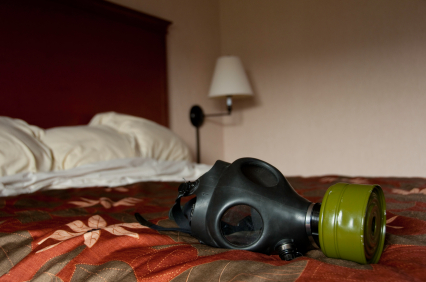How Air Purifiers Work
Many of us own air purifiers, whether it is because you have allergies or too much pet hair floating in your home. Air purifiers have been around for the past couple of decades, but most of us still don’t know how they work. There are many types of air purifiers on the market, and each kind works a little differently. Below are the different types of air purifiers and how they work.

Ultraviolet germicidal irradiation
Besides being a very tricky tongue twister, ultraviolet germicidal irradiation is a very effective way in which air purifiers work their magic. This method works by utilizing the high power of ultraviolet light. Air is forced through the ultraviolet light lamps, which is then cleaned by the lamps and circulated out of the purifier. After the air travels through the UV lamp, it is then processed through a filtration system that removes the dead micro-organisms. Sharp is a great producer of UGI filtration systems.
Buy Water Air Purifiers Today On Amazon.com
Filter Systems
Filter systems work in a very simple way. Air is forced in and is forced through the filter, thus trapping most of the pollutants in the air. There are two types of filters:
- HEPA – HEPA stands for high efficiency particulate air. It is efficient all the way down to 0.3 microns, removing 99.97% of allergens this size. HEPA filters are generally placed behind a coarser normal filter so that the HEPA filter only has to deal with small particles. This way, the HEPA filter does not have to be cleaned very often. Enviracaire is a very popular brand for HEPA filters. MERV – MERV is not as efficient as HEPA, capturing 75% of particles between 0.3 – 1.0 microns. Despite this, the MERV filter can process more air in an hour than a HEPA filter, and they generally cost much less.
- Activated Carbon – Activated carbon is used primarily to absorb chemical contaminants. Basically, activated carbon is the process of turning chemical contaminants into physical ones. It is usually used in conjunction with a solid filter such as HEPA.
Photocatalytic Oxidation (PCO)
Despite being hard to say, PCO is actually a very good air cleaning technique. PCO uses short wave ultraviolet lightwaves to sterilize up to 99.9% of the bacteria that is naturally found in the air. PCO does not filter, rather it uses lightwaves to destroy bacteria that are found in the air. The UV bulbs that produce the light must be replaced at least once every year to maintain effectiveness. The downside to using a PCO unit is the cost.
- Ionizer Purifiers – Ionizer purifiers rely on using electrically charged liquid ions to eliminate particles. The ions attach themselves via electrostatic and brings the particles into the collection plate. Despite producing a small amount of ozone, which can be harmful for the environment, most filters produce less than 0.05 ppm of ozone, meeting safety standards. Fanless ionizers are quiet and use little power, but are less effective than their counterpart, the fan-based ionizer.
- Liquid Ionizer – Liquid ionizers utilize capillaries to flow liquid into a field in order to create liquid ions. Liquid ions have a small enough charge so that they can float through the air, cleaning the air while they float. The liquid ions attach themselves to the particles much in the same way that an air ion would. Liquid ions do not produce any by products such as ozone, thus it is safe to use in homes and businesses.
- Ozone Generators – Ozone generators create ozone to eliminate the air particles and clean the air. Ozone generators, as their name suggests, produce large amounts of ozone. Thus, it is not safe to use an ozone generator in the same manner that you would use other forms of air purifiers. It is best used in large businesses or in homes as a “shock” treatment rather than around the clock affair. Ozone generators are the most powerful form of air purifiers, and are often used by contractors to remove smoke, mold, flood damage and musty smells. It is extremely unsafe to breathe in the heavy amounts of ozone that these purifiers produce. Therefore, it is imperative that nobody is in the room when the purifier is on.
Air purifiers are remarkable pieces of engineering. They are used to clean the air which we breathe every day. Without air purifiers, the air we breath would be a whole lot dirtier, and for those of us with allergies, we would suffer immensely.
